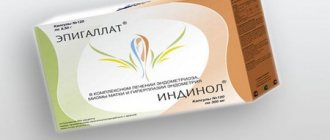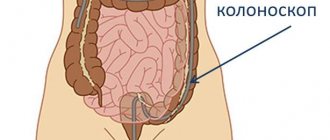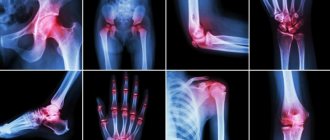Uterine fibroids are a gynecological disease that causes a lot of discomfort and pain, and a drug such as Esmya for fibroids can significantly ease a woman’s well-being and relieve her of painful symptoms. Myoma is a hormone-dependent tumor formed from the muscle tissue of the uterus. According to medical statistics, more than forty percent of women are susceptible to this disease, from the youngest to women in menopause. For a long time, the only way to get rid of further development of the tumor was surgery, but now, thanks to the unique properties of the new drug, it is possible to avoid this unpleasant procedure and save the uterus.
Causes and characteristics of the disease
Myoma or leiomyoma is primarily a benign tumor, the formation and further development of which occurs in the uterus or in its cervical part. The size of such a formation can vary, ranging from a few millimeters to tens of centimeters. Often a woman is diagnosed with multiple fibroids, consisting of several myomatous nodes. To control her growth and monitor her size, it is customary to take all measurements in weeks similar to the duration of pregnancy.
In medicine, terms are used that define the localization of fibroids relative to the surface of the uterus:
- subserous type of fibroids - forming from the outside;
- submucous appearance - with an internal location of the tumor;
- fibroids of these two types, formed on a stalk.
This type of tumor can form for a variety of reasons, the main one of which is considered to be sudden changes in a woman’s hormonal levels. There are also less significant factors that give rise to the formation of myomatous nodes, for example:
- heredity;
- infections occurring in the genitals;
- injuries to organs located in the pelvis;
- menstrual irregularities;
- excess weight;
- pathological changes in the endocrine and cardiovascular systems.
As the disease progresses and the tumor enlarges, patients may experience the following manifestations of fibroids, characteristic of each of its stages:
- heavy acyclic bleeding;
- disorders and disruptions of the menstrual cycle;
- pain in the lower abdomen and lumbar region;
- dysfunctions of the intestines and urination processes;
- increase in belly size.
It is necessary to be attentive to your body and be able to notice even minor signs of pathologies occurring in it. If you discover one of the signs of fibroid formation, you must immediately undergo examination by a gynecologist.
Esmiya, tablets 5 mg, 28 pcs.
Ulipristal is a synthetic selective modulator of progesterone receptors, characterized by a tissue-specific partial antiprogesterone effect, active when taken orally.
Endometrium Ulipristal has a direct effect on the endometrium. When starting a daily dose of 5 mg of the drug during the menstrual cycle, most women (including patients with fibroids) end up with one menstrual bleeding, and the next one does not occur. When the drug is stopped, the menstrual cycle usually resumes within 4 weeks. Direct action on the endometrium leads to class-specific changes in the endometrium associated with an antagonistic effect on progesterone receptors (Progesterone Receptor Modulator Associated Endometrial Changes (PAEC)). As a rule, histological changes are represented by an inactive and weakly proliferating epithelium, accompanied by asymmetry of growth of the stroma and epithelium, pronounced cystic expansion of the glands with mixed estrogenic (mitotic) and progestogenic (secretory) effects on the epithelium. Such changes were observed in approximately 60% of patients receiving ulipristal acetate for 3 months. These changes are reversible and disappear after cessation of treatment and should not be mistaken for endometrial hyperplasia.
In approximately 5% of patients of childbearing age with severe forms of menstrual bleeding, the thickness of the endometrium is more than 16 mm. In 10-15% of patients receiving ulipristal acetate, the endometrium may thicken (>16 mm) during treatment. This thickening disappears after stopping the drug and resuming menstrual bleeding. If endometrial thickening remains for 3 months after the end of treatment and the return of menstruation, additional examination should be performed to exclude other diseases.
Leiomyoma Ulipristal has a direct effect on leiomyomas, suppressing cell proliferation and inducing apoptosis, which leads to a decrease in their size.
Pituitary gland When taking ulipristal daily at a dose of 5 mg, ovulation is suppressed in most patients, as evidenced by maintaining the concentration of progesterone at a level of about 0.3 ng/ml. When taking ulipristal daily at a dose of 5 mg, the concentration of FSH is partially reduced, but the concentration of estradiol in the blood serum in most patients is maintained at the level of the mid-follicular phase and corresponds to that in the placebo group. Ulipristal does not affect the concentration of thyroxine-binding globulin (TBG), ACTH and prolactin in the blood plasma during 3 months of treatment.
Preclinical Safety Data Preclinical safety pharmacology, repeated dose toxicity, and genotoxicity studies did not identify potential hazards to humans. The main findings in studies of general toxicity are associated with the effect on progesterone receptors (as well as on GCS receptors when using the drug in higher concentrations), with antiprogesterone activity at exposures close to therapeutic in humans. A 39-week low-dose study in monkeys showed changes similar to RAEC. Due to its mechanism of action, ulipristal causes fetal death in rats, rabbits (at repeated doses above 1 mg/kg), guinea pigs and monkeys. The safety of the drug in relation to the human embryo has not been established. At doses small enough to maintain pregnancy in animals, no teratogenic potential has been identified. Reproduction studies in rats using doses equivalent to human exposures showed no evidence of effects on the reproductive capacity of animals treated with ulipristal or their offspring. In studies conducted on mice and rats, the carcinogenic effect of ulipristal was not revealed.
Clinical efficacy and safety The efficacy of fixed doses of ulipristal 5 mg and 10 mg once daily was assessed in two phase 3 studies in patients with very heavy menstrual bleeding caused by uterine fibroids. Compared with placebo, a clinically significant reduction in the volume of menstrual blood loss was detected in patients taking ulipristal. This made it possible to quickly and more effectively correct anemia than when prescribing iron supplements alone. The reduction in menstrual blood loss in patients in the ulipristal group was comparable to the group receiving the GnRH agonist (leuprorelin). In most patients receiving ulipristal, bleeding stopped during the first week of treatment (amenorrhea developed).
According to MRI, there was a significantly greater reduction in uterine fibroid size in the ulipristal group than in the placebo group. In patients who did not undergo hysterectomy or myomectomy, a decrease in the size of uterine fibroids was assessed by ultrasound control at the end of treatment (week 13). As a rule, it persisted throughout the 25-week follow-up in patients in the ulipristal group, while in the group receiving leuprorelin there was a slight increase in the size of uterine fibroids. In another Phase 3 study, in which patients received 2 courses of ulipristal 10 mg for 3 months, the incidence of amenorrhea was comparable at the end of both courses of therapy. The reduction in leiomyoma volume recorded during the first course was maintained during the second course. Taking into account the results of previous studies, the effectiveness of the drug at a dose of 5 mg during the first course of therapy will be the same during the second course of therapy, similar to a dose of 10 mg.
Despite the limited number of patients completing four 3-month courses of treatment, the safety data obtained were sufficient to justify one additional 3-month course of therapy in the preoperative period.
Pharmacokinetics Absorption After a single oral dose of 5 mg or 10 mg, ulipristal is rapidly absorbed, reaching a Cmax of 23.5 ± 14.2 ng/ml and 50.0 ± 34.4 ng/ml, respectively, approximately 1 hour after administration. AUC0-∞ is 61.3±31.7 and 134.0±83.8 ng×h/ml, respectively. Ulipristal is quickly transformed into a pharmacologically active metabolite, and 1 hour after administration, Cmax is 9.0±4.4 ng/ml and 20.6±10.9 ng/ml, AUC0-∞ is 26.0±12.0 and 63.6±30.1 ng×h/ml, respectively. Taking ulipristal 30 mg with a high-fat breakfast resulted in an approximately 45% decrease in mean Cmax, a prolongation of time to Cmax (from a median of 0.75 hours to 3 hours) and a 25% increase in AUC0-∞, compared with administration on an empty stomach. The same results were obtained for the active mono-N-demethylated metabolite. This kinetic effect of food is not considered significant for daily use of ulipristal tablets.
Distribution Ulipristal is highly (>98%) bound to plasma proteins, including albumin, α-1-acid glycoprotein, high-density lipoproteins and low-density lipoproteins. Ulipristal and its active N-demethylated metabolite are excreted in breast milk; The average AUCt ratio for milk/plasma is 0.74±0.32 for ulipristal.
Metabolism Ulipristal acetate is rapidly converted to mono-N-demethylated and then di-N-demethylated metabolites. In vitro data indicate that this process occurs in the cytochrome P450 system involving isoenzyme 3A4 (CYP3A4). Based on the fact that the metabolism of ulipristal acetate is mediated by cytochrome P450, the effect of hepatic impairment on the elimination of ulipristal acetate is expected to increase its exposure.
Excretion The main route of elimination is through the intestines, less than 10% of the substance is excreted by the kidneys. The final T1/2 of ulipristal acetate after a single dose of 5 mg or 10 mg is approximately 38 hours, the average clearance is about 100 l/h. In vitro data show that at clinically relevant concentrations of ulipristal acetate and its active metabolite do not inhibit the isoenzymes CYP1A2, 2A6, 2C9, 2C19, 2D6, 2E1 and 3A4 and do not induce the CYP1A2 isoenzyme. Thus, the use of ulipristal acetate should not affect the clearance of drugs that are metabolized with the participation of these isoenzymes. In vitro data indicate that ulipristal acetate and its active metabolite are not substrates of P-glycoprotein (ABCB1).
Causes of uterine fibroids in women
The main reason for the formation of fibroids is considered to be hormonal imbalance caused by various external and internal factors. Myomatous formations more often occur in fairly young women with their active hormonal levels, and during menopause, when reproductive functions attenuate and hormonal levels with estrogen production decrease, the development of fibroids slows down. The main reasons causing the formation and further development of fibroids include:
- As mentioned above, these are primarily hormonal changes with an excess of estrogens and a lack of progesterones.
- Development of adenomyosis.
- Inflammation of the genital organs.
- Violation of metabolic processes.
- Diabetes.
- Various chronic pathologies.
- Stressful situations that last for a long time or are repeated periodically.
- Insufficient physical activity.
- Consequences of abortion.
- Using an IUD for longer than recommended.
- Inferior sexual relations without orgasm.
The development of fibroids can be facilitated by the use of oral contraceptives, as well as injury during diagnostic procedures, repeated medical abortions, sexually transmitted infections and incompletely cured inflammatory diseases of the reproductive organs. All these actions lead to hormonal disorders with an imbalance of the main sex hormones, which results in the formation of a tumor.
How are uterine fibroids treated?
The treatment used for a disease such as fibroids involves an integrated approach that involves delaying the growth of the myomatous node and its reverse development. Based on the type of tumors, their size, stage and other indicators, after the examination, individual treatment is prescribed. It is customary not to touch a small fibroid, but only to regularly monitor its behavior. If it behaves actively and increases, then complex hormone therapy is carried out together with herbal medicine.
Traditional therapeutic methods include:
- hormone therapy;
- fuse ablation;
- myomectomy;
- hysterectomy;
- embolization of the uterine arteries.
If the treatment did not help stop the growth of fibroids, malignant changes are detected in its cells, then more radical methods are resorted to. Until recently, it was possible to stop the development of fibroids only by removing them through surgery. This method, and the absence of such an important organ as the uterus, which was often removed along with the ovaries, did not add health to the female body. And there is no need to talk about the emotional side of these events; such a psychological shock was very difficult for women to bear. It became possible to avoid all this and preserve the reproductive organs, as well as your reproductive functions, with the advent of Esmiya, which today is considered a true panacea for eliminating fibroids.
Interaction
Possible influence of other drugs on the action of ulipristal. Hormonal contraceptives. Ulipristal has a steroid structure and acts as a selective modulator of progesterone receptors with a predominant inhibitory effect on progesterone receptors. Thus, hormonal contraceptives and gestagens can reduce the effectiveness of ulipristal by competitively acting on the progesterone receptor. Therefore, the simultaneous use of drugs containing gestagens is not recommended. Inhibitors of the CYP3A4 isoenzyme. After use of the moderate inhibitor of the CYP3A4 isoenzyme erythromycin propionate (500 mg 2 times a day for 9 days) in healthy female volunteers, the maximum concentration and AUC of ulipristal increased by 1.2 and 2.9 times respectively; the AUC value of the active metabolite of ulipristal increased 1.5 times, while the maximum concentration of the active metabolite decreased (0.52 times). Concomitant use of potent inhibitors of the CYP3A4 isoenzyme (ketoconazole, ritonavir, nefazodone) may lead to a greater increase in the concentration of ulipristal in the blood plasma. No dose adjustment is required when using ulipristal in patients receiving weak inhibitors of the CYP3A4 isoenzyme. The combined use of moderate or strong inhibitors of the CYP3A4 isoenzyme with ulipristal is not recommended. Inducers of the CYP3A4 isoenzyme. In patients receiving inducers of the CYP3A4 isoenzyme, a decrease in the concentration of ulipristal in the blood plasma may be observed. The combined use of ulipristal and powerful inducers of the CYP3A4 isoenzyme (rifampicin, carbamazepine, phenytoin, St. John's wort preparations) is not recommended. Drugs that affect the pH of gastric juice. The use of ulipristal (10 mg/day) together with the proton pump inhibitor esomeprazole (20 mg once a day) day for 6 days) results in a 65% decrease in mean maximum concentration, prolonged tmax (from a median of 0.75 hours to 1.0 hours) and a 13% increase in mean AUC. This effect of drugs that increase the pH of gastric juice is not considered clinically significant for daily use of ulipristal tablets. Possible influence of ulipristal on the action of other drugs. Hormonal contraceptives. Ulipristal may interfere with the action of hormonal contraceptives (only progestogen-containing tablets, progestogen-releasing systems or combined oral contraceptives ) and progestin preparations used for other indications. Therefore, the concomitant use of drugs containing gestagen is not recommended. Progestogen-containing drugs should not be used within 12 days after stopping treatment with ulipristal. P-glycoprotein substrates. In vitro data show that in clinically significant concentrations, ulipristal during absorption in the wall of the gastrointestinal tract may be an inhibitor of P-glycoprotein (P-gp) . Thus, concomitant use of ulipristal may increase the concentration of other drugs - P-gp substrates - in the blood plasma. In the absence of clinical data, the simultaneous use of ulipristal and P-gp substrates (dabigatran etexilate, digoxin) is not recommended. The patient should tell her doctor about all medications she is taking, even if they are over-the-counter.
Description of the drug
Esmya is a selective modulator of progesterone receptors, which allows it to be successfully used in the treatment of fibroids. The medicine is made in the form of round white tablets with a slightly creamy tint, on one side of which there is an engraving ES5.
The main active ingredient of the medicine:
- ulipristal acetate;
Its action is based on blocking progesterone receptors, which ultimately stops bleeding. In addition, fibroids shrink at any time, even in cases where there is only one option left - surgical removal.
As excipients, the drug contains:
- microcrystalline cellulose, mannitol, talc, magnesium stearate, croscarmellose sodium.
The main properties characterizing the capabilities of the drug Esmiya;
- acts directly on fibroid cells;
- stops the division of pathological cells and leads to their death.
Esmiya
Description
Ulipristal acetate is an orally active synthetic selective modulator of progesterone receptors, characterized by a tissue-specific partial antiprogesterone effect. Endometrium Ulipristal acetate has a direct effect on the endometrium. When starting a daily dose of 5 mg of the drug during the menstrual cycle, most women (including patients with fibroids) end their next menstruation, and the next one does not occur until treatment is stopped. When the drug is stopped, the menstrual cycle usually resumes within 4 weeks. Direct action on the endometrium leads to class-specific changes in the endometrium associated with a progesterone receptor modulator (Progesterone Receptor Modulator Associated Endometrial Changes (PAEC)). As a rule, histological changes are represented by an inactive and weakly proliferating epithelium, accompanied by asymmetry of growth of the stroma and epithelium, pronounced cystic expansion of the glands with mixed estrogenic (mitotic) and progestogenic (secretory) effects on the epithelium. Such changes were observed in approximately 60% of patients receiving ulipristal acetate for 3 months. They are reversible and disappear after cessation of treatment and should not be mistaken for endometrial hyperplasia. In approximately 5% of patients of childbearing age with severe forms of menstrual bleeding, the thickness of the endometrium is more than 16 mm. In 10-15% of patients receiving ulipristal acetate, the endometrium may thicken (>16 mm) during treatment. This thickening disappears after stopping the drug and resuming menstrual bleeding. If endometrial thickening remains for 3 months after the end of treatment and the return of menstruation, additional examination should be performed to exclude other diseases. Leiomyoma Ulipristal acetate has a direct effect on leiomyomas, suppressing cell proliferation and inducing apoptosis, which leads to a decrease in their size. Pituitary gland When taking ulipristal acetate daily at a dose of 5 mg, ovulation is suppressed in most patients, as evidenced by maintaining progesterone concentrations at a level of about 0.3 ng/ml. When taking ulipristal acetate daily at a dose of 5 mg, the concentration of follicle-stimulating hormone (FSH) is partially reduced, but the concentration of estradiol in the blood serum in most patients is maintained at the level of the mid-follicular phase and corresponds to that in the placebo group. Ulipristal acetate does not affect the concentration of thyroxine-binding globulin (TBG), adrenocorticotropic hormone (ACTH) and prolactin in the blood serum over 3 months of treatment. Clinical efficacy and safety The effectiveness of fixed doses of ulipristal acetate 5 mg and 10 mg once a day was assessed in two randomized, double-blind, 13-week phase III studies that included patients with heavy heavy menstrual bleeding associated with uterine leiomyoma. Study 1 was double-blind and placebo-controlled. It included patients with anemia (Hb < 10.2 g/dl), who, along with the study drug, additionally received oral medications containing 80 mg of iron. Study 2 compared with leuprorelin, which was administered at a dose of 3.75 mg once a month IM (active control). Study 2 used a double-masking design (two placebo controls) to support blinding. In both studies, menstrual blood loss was assessed using the Pictorial Bleeding Assessment Chart (PBAC). A PBAC score >100 during the first 8 days of menstruation is considered to indicate increased menstrual blood loss. In Study 1, statistically significant differences were observed in the reduction in menstrual blood loss in favor of ulipristal acetate compared with placebo (see Table 1), which provides faster and more effective correction of anemia compared with iron alone. Similarly, patients treated with ulipristal acetate experienced a greater reduction in fibroid size, as demonstrated by MRI. In Study 2, the reduction in menstrual blood loss was comparable between the groups of patients receiving ulipristal acetate and the GnRH agonist (leuprorelin). In the majority of patients receiving ulipristal acetate, bleeding stopped within the first week of treatment.
Properties and advantages over other medications
The hormonal drug Esmya has antihistogenic properties, due to the content of the patented substance uliprestal acetate, it directly acts on the nodes of fibroids, stops the growth of its tissues and causes the death of tumor cells. As a result, under the influence of the therapeutic agent, the tumor begins to shrink, which is also important during the period of preparation for surgical removal of fibroids, as it allows you to reduce the volume of tissue removed.
When treating fibroids, the use of Esmiya normalizes blood loss during menstruation and prevents the development of anemia. Compared to previous drugs used to treat myomatous formations, the new drug has a number of advantages:
- Reduces the activity of progesterone receptors, resulting in a decrease in the amount of hormones and a halt in tumor development.
- By acting on the pituitary gland, it acts as a contraceptive.
- Does not cause a decrease in estrogen levels, does not reduce bone density.
- It affects only damaged myometrial cells.
- Has an antimicrobial effect, suppressing the development of infections.
- Stops uterine bleeding of any intensity, eliminates pain symptoms, and prevents the development of anemia.
- Restores fertility to women.
- It has a cumulative effect, the therapeutic effect lasts for at least six months after stopping the drug.
- It is well tolerated by patients and has virtually no side effects.
Despite all the positive properties of Esmiya, treatment should only be carried out as prescribed by a doctor. It is unacceptable to take this drug on your own, as this is fraught with serious complications.
Instructions for use ESMYA® (ESMYA®)
Ulipristal acetate is an orally active synthetic selective progesterone receptor modulator characterized by a partial tissue-specific antiprogesterone effect.
Endometrium
Ulipristal acetate has a direct effect on the endometrium. If daily use of the drug at a dose of 5 mg is started during the menstrual cycle, in most women (including patients with uterine fibroids), the next menstruation continues, and subsequent menstruation does not occur until treatment is suspended. After the end of treatment, the menstrual cycle resumes (usually within 4 weeks).
Direct action on the endometrium results in class-specific histological changes in the endometrium called RAEC (progesterone receptor modulator-associated endometrial changes). As a rule, the histological picture is represented by an inactive and weakly proliferating epithelium, accompanied by asymmetry of growth of the stroma and epithelium, which leads to pronounced cystic expansion of the glands with mixed estrogenic (mitotic) and progestin (secretory) effects on the epithelium. Such changes were observed in approximately 60% of patients receiving ulipristal acetate for 3 months. Such changes are reversible after cessation of treatment. Identification of such changes should not be mistaken for endometrial hyperplasia.
In approximately 5% of patients of reproductive age with heavy menstrual bleeding, endometrial thickening exceeds 16 mm. In approximately 10-15% of patients receiving ulipristal acetate, the endometrium may thicken (>16 mm) during the first 3 months of treatment. In the case of repeated courses of therapy, endometrial thickening was observed with less frequency (4.9% of patients after the second course of therapy and 3.5% after the fourth). This thickening disappears after stopping the drug and returning to menstruation. If endometrial thickening persists after the resumption of menstruation during periods of interruption of therapy or 3 months after the end of courses of therapy, a standard examination should be performed to exclude other diseases.
Uterine fibroids
Ulipristal acetate has a direct effect on uterine fibroids, reducing their size by suppressing cell proliferation and inducing apoptosis.
Pituitary
With daily use of ulipristal acetate at a dose of 5 mg, ovulation is suppressed in most patients, as evidenced by maintaining progesterone concentrations at about 0.3 ng/ml.
With daily use of ulipristal acetate at a dose of 5 mg, FSH levels are partially reduced, but the concentration of estradiol in the blood serum in most patients is maintained at the level of the mid-follicular phase and corresponds to that in the placebo group.
Ulipristal acetate does not affect serum concentrations of thyroxine-binding globulin (TBG), ACTH, or prolactin.
Clinical efficacy and safety
Use in the preoperative period:
The efficacy of fixed single doses of ulipristal acetate 5 mg and 10 mg was assessed in two randomized, double-blind, 13-week phase III studies that included patients with extremely heavy menstrual bleeding associated with uterine fibroids.
There were statistically significant differences in the reduction in menstrual blood loss, which were higher in patients receiving ulipristal acetate compared to those receiving placebo, thereby ulipristal acetate provided a faster and more effective correction of anemia compared to iron monotherapy. The reduction in menstrual blood loss was comparable for the groups of patients receiving ulipristal acetate and the GnRH agonist (leuprorelin). In most patients receiving ulipristal acetate, bleeding stopped within the first week of treatment (amenorrhea).
In addition, patients receiving ulipristal acetate had a more pronounced reduction in fibroid size according to MRI results.
Myoma size was assessed by ultrasound at the end of treatment (week 13) and for an additional 25 weeks of follow-up in patients who did not undergo hysterectomy or myomectomy. The reduction in fibroid size was generally maintained during this follow-up period in patients initially treated with ulipristal acetate, and some regrowth of fibroids was detected in the leuprorelin group.
Table 1. Results of primary and selected results of secondary evaluation of efficacy indicators in phase III clinical trials
Study 1.
| Options | Placebo (n=48) | Ulipristal acetate 5 mg/day (n=95) | Ulipristal acetate 10 mg/day (n=94) |
| Menstrual bleeding | |||
| Median PBAC at baseline | 376 | 386 | 330 |
| Median change at 13 weeks | -59 | -329 | -326 |
| Patients with amenorrhea at 13 weeks | 3 (6.3%) | 69 (73.4%)1 | 76 (81.7%)2 |
| Patients whose menstrual bleeding returned to normal (PBAC <75) at week 13 | 9 (18.8%) | 86 (91.5%)1 | 86 (92.5%)1 |
| Median changes in fibroid volume by week 13 relative to baselinea | +3.0% | -21.2%3 | -12.3%4 |
Study 2.
| Options | Leuprorelin 3.75 mg/month (n=93) | Ulipristal acetate 5 mg/day (n=93) | Ulipristal acetate 10 mg/day (n=95) |
| Menstrual bleeding | |||
| Median PBAC at baseline | 297 | 286 | 271 |
| Median change at 13 weeks | -274 | -268 | -268 |
| Patients with amenorrhea at 13 weeks | 74 (80.4%) | 70 (75.3%) | 85 (89.5%) |
| Patients whose menstrual bleeding returned to normal (PBAC < 75) at week 13 | 82 (89.1%) | 84 (90.3%) | 93 (97.9%) |
| Median change in fibroid volume from baseline to week 13a | -53.5% | -35.6% | -42.1% |
a In Study 1, change from baseline in total fibroid volume was assessed by MRI. In Study 2, the sizes of the 3 largest fibroids were determined using ultrasound. Values in bold indicate significant differences when comparing ulipristal acetate and control. All differences noted were in favor of ulipristal acetate.
P values: 1 = <0.001, 2 = 0.037, 3 = <0.002, 4 = <0.006.
Intermittent therapy
The effectiveness of repeated courses of single fixed doses of ulipristal acetate 5 mg or 10 mg was determined in two phase III studies that assessed a maximum of four 3-month courses of therapy in patients with heavy menstrual bleeding associated with uterine fibroids. Study 3 was an open-label study evaluating ulipristal acetate 10 mg, in which each 3-month course of therapy was followed by 10 days of double-blind progestin or placebo therapy. Study 4 was a randomized, double-blind clinical trial evaluating ulipristal acetate at doses of 5 or 10 mg.
Studies 3 and 4 showed efficacy in controlling uterine fibroid symptoms (eg, uterine bleeding) and reducing fibroid size after 2 and 4 courses of treatment.
In Study 3, treatment efficacy was observed over >18 months of multiple intermittent courses of therapy (4 courses using a dose of 10 mg once a day), and at the end of the 4th course of therapy, 89.7% of patients had amenorrhea.
In study 4, 61.9% and 72.7% of patients had amenorrhea at the end of courses 1 and 2 (doses of 5 mg and 10 mg, respectively, p = 0.032); in 48.7% and 60.5% of patients, amenorrhea was registered at the end of all four courses of therapy (doses of 5 mg and 10 mg, respectively, p = 0.027). According to the assessment, at the end of the 4th course of therapy, amenorrhea was registered in 158 (69.6%) and 164 (74.5%) patients, respectively (p = 0.290).
Table 2. Results of primary and selected results of secondary evaluation of efficacy indicators in long-term clinical trials of phase III
After completion of the second course of treatment (2 times 3 months of treatment)
| Index | Study 3a | Study 4 | |
| Patients who started 2 or 4 courses of therapy | 10 mg/day N=132 | 5 mg/day N=213 | 10 mg/day N=207 |
| Patients with amenorrheab,c | N=131 | N=205 | N=197 |
| 116 (88.5%) | 152 (74.1%) | 162 (82.2%) | |
| Patients with controlled bleedingb,c,d | n/a | N=199 | N=191 |
| 175 (87.9%) | 168 (88.0%) | ||
| Median change in fibroid volume from baselinea | -63.2% | -54.1% | -58.0% |
After completion of the fourth course of treatment (4 times 3 months of treatment)
| Index | Study 3 | Study 4 | |
| Patients who started 2 or 4 courses of therapy | 10 mg/day N=107 | 5 mg/day N=178 | 10 mg/day N=176 |
| Patients with amenorrheab,c | N=107 | N=227 | N=220 |
| 96 (89.7%) | 158 (69.6%) | 164 (74.5%) | |
| Patients with controlled bleedingb,c,d | n/a | N=202 | N=192 |
| 148 (73.3%) | 144 (75.0%) | ||
| Median change in fibroid volume from baselinea | -72.1% | -71.8% | -72.7% |
a The 2nd course of therapy score corresponds to 2nd course of therapy plus one menstrual bleed.
b Patients with missing values were excluded from the analysis.
c N and % are presented taking into account dropped out patients.
d Controlled bleeding was defined as no episodes of heavy bleeding and a maximum of 8 days of bleeding (excluding spotting days) during the last 2 months of therapy.
Results of studies assessing the effect on the endometrium
In all phase III studies (including studies of intermittent course therapy), among 789 patients, 7 cases of hyperplasia (0.89%) were recorded, confirmed by the results of pathomorphological examination. In the intervals between courses of treatment and upon the resumption of menstruation, in most cases, spontaneous disappearance of all previously recorded changes in the endometrium occurred. During subsequent courses of therapy, the incidence of hyperplasia did not increase. The reported frequencies are consistent with those in control groups and the prevalence reported in the literature for premenopausal women in this age group (mean age 40 years).
Release form and composition
Esmya is available in the form of tablets containing 5 mg of ulipristal acetate.
Tablets 14 pcs. packaged in a blister and in cardboard boxes of two or six blisters, have a round shape with an engraving on one side, which is evidence of the authenticity of the drug. This medicine has a fairly high price, which averages about 9 thousand rubles per package, and in other regions other than Moscow, the cost of Esmya may be slightly higher or lower.
Who is it prescribed for and how to take it
The drug Esmya for fibroids can be prescribed to all patients over 18 years of age if they have myomatous nodes in the moderate and severe stages. It is also used in preoperative preparation for fibroid removal to reduce the size of the tumor and make the operation less traumatic.
The instructions attached to the drug indicate that the course of treatment is three months, repeated, if necessary, after a two-month break.
It will be enough to take just one tablet containing 5 mg of the main substance per day. Treatment begins at the beginning of the cycle, and in order for the concentration of the drug in the blood to be constant, it must be taken at a certain time. If the patient does not take the pill at the prescribed hour, then this can be done in the next 12 hours. If the missed time is longer, then the appointment is carried out only the next day at regular hours.
Mode of application
Orally, one tablet once a day, regardless of food intake, for no more than 3 months. Treatment should begin during the first week of the menstrual cycle. There are no data on treatment beyond 3 months or repeated courses of therapy, so the duration of treatment should not exceed 3 months. If you miss a tablet, take the drug tablet as quickly as possible. If a dose is missed for more than 12 hours, then the missed tablet is not taken, and you should simply resume the usual dosage regimen. Special groups of patients. Renal failure. In patients with mild or moderate renal failure, no dose adjustment is required. The drug is not recommended for use in patients with severe renal failure when constant monitoring is not possible. Liver failure. In patients with mild liver failure, no dose adjustment is required. The drug is not recommended for use in patients with moderate or severe liver failure when constant monitoring is not possible. Children. The use of the drug for appropriate indications in children is not intended. The safety and effectiveness of ulipristal have been established only for women 18 years of age and older.
Side effects and contraindications
Although the drug is unique and can significantly improve the life of patients with uterine fibroids, it nevertheless has some contraindications, and during therapy it can cause side effects:
- the appearance of headaches accompanied by dizziness;
- unreasonable feelings of anxiety;
- attacks of nausea, pain in the abdomen, problems with stool;
- increased sweating and skin rashes;
- backache;
- breast pain;
- weight gain;
- tides;
- formation of edema.
The appearance of these symptoms does not always cause a complete refusal of treatment with Esmiya; perhaps the doctor will prescribe a lower dosage. The following body conditions should be taken into account as contraindications:
- individual intolerance to one of the components;
- persons under eighteen years of age;
- uterine bleeding of unknown origin;
- malignant lesions of the internal genital organs;
- severe stages of bronchial asthma;
- period of pregnancy and lactation;
- under control - for kidney and liver diseases.
Despite the existing list of contraindications, Esmya is easily tolerated by patients and is not capable of having such far-reaching effects on the body as other hormonal drugs used for similar diseases. Often, the adverse effects can be eliminated by reducing the dose of the drug, which allows you to continue treatment and achieve the expected result.
Characteristics of the drug
Currently, gynecologists are prescribing Esmya to an increasing number of patients for uterine fibroids. The effectiveness is confirmed by numerous positive reviews from doctors about the drug and the results of clinical studies conducted both by the manufacturer itself and by independent experts. To figure out who can take this drug and how to achieve the maximum positive effect in the treatment of fibroids, you should study its composition and instructions in detail.
Compound
The active ingredient of the drug is ulipristal acetate. It is a synthetic progesterone receptor modulator. This means that it binds to receptors for the hormone progesterone located in the epithelium of the uterus and fibroids, thereby blocking the effect of the ovarian hormone itself on them. This effect of the drug is called antigestagenic.
Uterine fibroids are a hormone-dependent tumor and its active growth directly depends on the synthesis of sex hormones. When progesterone receptors are blocked, it significantly decreases in size, which helps the symptoms disappear.
Also, taking ulipristal has an effect on the pituitary gland, which is manifested in a decrease in the level of follicle-stimulating hormone. At the same time, ovarian function decreases and ovulation is suppressed, which also has a positive effect on the treatment of fibroids.
Release form
Esmya is available in tablet form. The white biconvex tablets are engraved with ES5 on one side.
Each package contains 2 or 6 blisters of 14 tablets.
Indications for use
Esmya is prescribed for the treatment of moderate to severe symptoms of uterine fibroids, such as:
- Bleeding leading to the development of anemia.
- Menstrual irregularities.
- Chronic pain syndrome.
It is often used as a preoperative treatment for myomatous nodes in order to reduce their size before removal.
Side effects
The main side effect when taking ulipristal acetate to treat uterine fibroids is amenorrhea (lack of menstruation). However, this condition should be considered as positive, because it indicates the effective effect of Esmya on the uterine endometrium and ovarian function.
Most patients taking Esmya experience mild to moderate hot flashes (feelings of heat accompanied by increased sweating and palpitations).
Other undesirable effects include:
- Often (one in 100 patients): irritability, anxiety, headache and muscle pain, abdominal pain, acne, hyperhidrosis, breast engorgement, swelling.
- Uncommon (in one in 1000 patients): dizziness, nosebleeds, weight gain, bloating, constipation, patchy baldness, dry skin, bleeding from the genital tract, breast tenderness, urinary incontinence.
If adverse reactions occur, you should definitely consult with your doctor about further use of the drug.
Contraindications to taking the drug
Important! Before using Esmya for fibroids, be sure to read the list of contraindications.
If you have any of these symptoms, do not take this drug under any circumstances.
Taking Esmya is contraindicated for:
- Individual increased susceptibility to ulipristal or auxiliary components.
- Pregnancy and breastfeeding.
- Malignant tumors of the uterus and appendages, breast.
- Bleeding from the genital tract for reasons not related to the myomatous node.
- Severe impairment of the liver and kidneys.
Reviews from doctors
Doctors generally respond positively to the use of Esmiya for the treatment of patients with fibroids. In the case of a timely diagnosis and subsequent therapy with this drug, it is possible to obtain an almost one hundred percent successful result and refuse surgery. Here, correct treatment and strict adherence to all medical recommendations are of great importance, since otherwise the opposite effect can be achieved. The course of treatment should be carried out under the constant supervision of a gynecologist, monitoring changes in the condition of the tumor using ultrasound. As for intolerance to Esmiya, although this is possible, in practice it happens quite rarely. In these cases, adjusting the dose of the drug helps. Doctors have established the opinion that the use of Esmiya for fibroids allows one to avoid surgery, and in severe cases with advanced tumors, to reduce the amount of surgical intervention in the body.
special instructions
With caution: renal and/or liver failure, bronchial asthma. Use during pregnancy and breastfeeding. Pregnancy. Ulipristal is contraindicated during pregnancy. Data on the use of ulipristal in pregnant women are absent or limited. Although teratogenic potential has not been identified in animal studies, there is insufficient data regarding reproductive toxicity. Breastfeeding Period: Animal studies have shown that ulipristal passes into breast milk. It is unknown whether ulipristal passes into women's breast milk, so a risk to children during breastfeeding cannot be excluded. Ulipristal is contraindicated during breastfeeding. Ulipristal is prescribed only after a thorough examination. Before starting treatment, pregnancy should be excluded. Contraception. Due to the possibility of undesirable interactions, the concomitant use of only gestagen-containing drugs, gestagen-releasing systems or combined oral contraceptives is not recommended. Although anovulation was observed in most women receiving therapeutic doses of ulipristal, additional use of a non-hormonal method of contraception during treatment is recommended. Renal failure: There is no evidence to suggest that renal failure may significantly affect the elimination of ulipristal. It is not recommended to use ulipristal without constant monitoring in patients with severe renal failure, since special studies have not been conducted. Liver failure. There is no experience with the therapeutic use of ulipristal in patients with liver failure. It is expected that hepatic impairment may affect the elimination of ulipristal, resulting in increased effects of the drug. This is not significant for patients with mild liver failure. It is not recommended to prescribe ulipristal to patients with moderate or severe liver failure if constant monitoring is not possible. Concomitant therapy. Lipristal is not recommended for use in patients receiving P-gp substrates (dabigatran etexilate, digoxin). The simultaneous use of moderate or strong inhibitors of the CYP3A4 isoenzyme and ulipristal is not recommended recommended. The simultaneous use of ulipristal and powerful inducers of the CYP3A4 isoenzyme (rifampicin, carbamazepine, phenytoin, St. John's wort preparations) is not recommended. Changes in the endometrium. Ulipristal has a specific pharmacodynamic effect on the endometrium. There may be an increase in endometrial thickness. If endometrial thickening persists for 3 months after the end of treatment and the resumption of the menstrual cycle, additional examination should be performed to exclude other diseases. In patients receiving ulipristal, histological examination may show changes in the structure of the endometrium. Such changes are reversible after completion of treatment. These histologic changes are referred to as progesterone receptor antagonistic endometrial changes (PAECs) and should not be misdiagnosed as endometrial hyperplasia. Due to the lack of safety data on long-term use of the drug (more than 3 months) or repeated courses of treatment, the risk of adverse effects on the endometrium if treatment is continued is unknown. Therefore, the duration of treatment should not exceed 3 months. Bleeding: Patients should be informed that treatment with ulipristal usually results in a significant reduction in menstrual blood loss or amenorrhea during the first 10 days of treatment. If excessive bleeding continues, the patient should consult a doctor. As a rule, the menstrual cycle resumes within 4 weeks after the end of treatment. Fertility: Anovulation was observed in the majority of women taking ulipristal in therapeutic doses. However, fertility with long-term use of ulipristal has not been studied. Effects on the ability to drive vehicles and machines. Ulipristal may have a minimal effect on the ability to drive vehicles and machines, as mild dizziness may occur after taking ulipristal.
Patient reviews
Women themselves are generally satisfied with the treatment, especially when, with the help of Esmiya, surgery can be avoided. You can leave your reviews and results of treating fibroids with the drug in the comments below, they will be useful to other users!
Lera, 42 years old:
I decided to share the results of myoma treatment; the gynecologist prescribed me the drug Esmiya. Frankly, I doubted it at first, since the medicine is hormonal, and this always scared me. And it’s quite expensive, but I decided to do it. As a result, the tumor did not shrink, although it did not grow. They offered to repeat the treatment, but I have some doubts; maybe I’ll still agree to the operation before the tumor starts to grow. I think for now.
Nastya, 29 years old:
I took a full pack of pills and didn’t feel anything bad, although the doctor warned about the possibility of side effects. An ultrasound showed a reduction in the size of the tumor by as much as 0.9 cm, I continue treatment, I still need to drink for two whole months.
Olga 37 years old:
I hoped for this medicine, but my expectations were not met. It seems that the tumor began to react and shrink, but then resumed growth. This remedy is not suitable for me, I won’t risk it anymore and I agreed to undergo surgery.
Is it possible to use it together with the boron uterus?
Many patients try to find effective ways to treat fibroids among folk recipes, however, no herbs can change the causes of tumor formation. In any case, if you are going to take advantage of folk experience, you first need to discuss this method with your doctor. Thus, the use of St. John's wort is contraindicated in this case, and the same applies to a plant such as boron uterus. As you know, with its help it is possible to get rid of uterine bleeding and heavy menstruation. However, when treated with a drug such as Esmya, there is no menstruation at all, so the additional hemostatic effect of this plant can lead to undesirable consequences.
Does it make women fat?
Women often note that after a course of treatment they gained weight and their waist circumference increased. Although this is not such a frequent indicator, apparently, changes in hormonal levels have an effect, since it is completely individual for each female body. The psychological state may also have an effect when, due to the good results from the treatment, the mood may improve and an emotional upsurge may occur with an increase in appetite; women, without noticing it, begin to eat more, giving preference to sweet and fatty foods. In any case, some abstinence will not hurt, so you need to monitor the calorie content of your diet.
How does it work on hair?
Some patients who are prescribed the drug Esmya fear that it can affect hair growth and it will begin to fall out. Such cases are described very rarely and are mainly caused not by the influence of the drug, but by the state of a weakened body from anemia caused by heavy bleeding from fibroids. If this happens, you must first contact your gynecologist, who has prescribed treatment, undergo the necessary tests and find out what your body is missing or the reason for what is happening is a change in hormonal levels.
Esmia and vaginal discharge, bleeding
This drug affects hormonal levels; a lack of progesterone leads to functional changes in the uterus in the form of an underdeveloped epidermis. As a result, myomatous nodes stop growing, and the result is the absence of menstruation, since there is simply nothing to reject. In the first month of taking the drug, there is spotting brownish discharge, which increases somewhat during the period of expected menstruation. This is also observed in the second month of treatment; in the third month, menstruation is no longer observed, and intermediate vaginal discharge also does not occur.
Drug interactions
Progestins and hormonal contraceptives can reduce the effectiveness of Esmya, so they should not be taken simultaneously. Combined use with potent inhibitors of the CYP3A4 isoenzyme (ritonavir, ketoconazole, nefazodone) leads to an increase in the amount of ulipristal in the blood plasma. And the combined use of Esmya, according to reviews, with inducers of the CYP3A4 isoenzyme (carbamazepine, rifampicin, St. John's wort preparations, phenytoin) helps to reduce the concentration of ulipristal in the blood plasma.
Analogs
In some cases, it is impossible to carry out treatment with the drug Esmya, since there may be individual non-acceptance of its active substance or other reasons may arise. In this case, the gynecologist has the right to offer possible analogues as a replacement. Most often, for this purpose they resort to the drug Norkolut, with the active substance in its composition in the form of norethisterone. Also, drugs with similar effects are used as analogues in the form of:
- Ginestril;
- Epigallate;
- Gyneconorma;
- Epigalina;
- Stella;
- Zoladex;
- Quinola;
- Decapeptyl, etc.
They have similar pharmacological properties and general indications for use. However, you cannot replace Esmya with similar medications yourself; this should only be done by the attending physician if indicated.
Interesting video:









